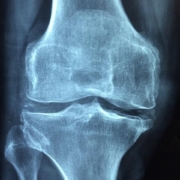7 Essential Tips for Ultimate MSK Self-Care and Relief
7 Essential Tips for Ultimate MSK Self-Care and Relief
In our fast-paced world, where every moment counts, it’s easy to overlook the importance of taking care of our musculoskeletal (MSK) health. Whether you’re grappling with persistent aches, recovering from an injury, or simply looking to enhance your overall well-being, prioritizing self-care can make a significant difference. In this listicle, we’ll explore seven essential tips that will empower you to take charge of your MSK health. From simple lifestyle adjustments to effective relaxation techniques, each tip is designed to provide you with practical strategies for relief and rejuvenation. By the end, you’ll be equipped with the knowledge to foster a more resilient and pain-free body, paving the way for a more vibrant and active life. Let’s dive in!
1) Prioritize Movement: Engage in gentle, low-impact exercises such as yoga or swimming to enhance flexibility and strength. Regular movement helps alleviate stiffness and promotes blood circulation, making it essential for maintaining musculoskeletal health
Incorporating gentle, low-impact exercises into your routine can work wonders for your musculoskeletal health. Activities like yoga and swimming not only improve flexibility but also build strength in a safe and manageable way. These exercises allow for a full range of motion, which helps to alleviate stiffness and discomfort. By focusing on controlled movements, you can enhance your body’s natural alignment and reduce the risk of injury. Consider exploring various styles of yoga, from restorative to hatha, to find what resonates best with your body’s needs.
Additionally, regular movement encourages better blood circulation, which is crucial for delivering oxygen and nutrients to your muscles and joints. To help you get started, here are some gentle exercises to consider:
- Gentle Yoga Poses: Child’s Pose, Cat-Cow Stretch, and Seated Forward Bend
- Swimming Techniques: Water aerobics, gentle laps, or aqua jogging
- Stretching Routines: Neck stretches, shoulder rolls, and hamstring stretches
For a more structured approach, consider setting a weekly schedule to ensure consistency. Here’s a simple table to help you plan your movement sessions:
| Day | Activity | Duration |
|---|---|---|
| Monday | Yoga | 30 minutes |
| Wednesday | Swimming | 45 minutes |
| Friday | Stretching | 20 minutes |
2) Mind Your Posture: Pay attention to your posture throughout the day, whether sitting at a desk or standing. Proper alignment can significantly reduce strain on your muscles and joints, preventing discomfort and long-term issues
Maintaining proper alignment throughout your day can be a game-changer in your journey towards musculoskeletal health. When seated, ensure that your back is straight, shoulders relaxed, and feet flat on the floor. Consider using ergonomic chairs that support the natural curve of your spine. If you spend long hours at a desk, try to incorporate the following tips into your routine:
- Adjust your chair height: Your elbows should be at a 90-degree angle when typing.
- Use a footrest: This can help keep your feet supported and your posture aligned.
- Take breaks: Stand up and stretch every 30 minutes to reset your posture.
When standing, distribute your weight evenly on both feet and engage your core muscles to support your spine. Avoid locking your knees and try to keep your hips aligned with your shoulders. To further enhance your posture, consider practicing these simple exercises:
| Exercise | Benefits |
|---|---|
| Wall Angels | Improves shoulder mobility and posture |
| Cat-Cow Stretch | Enhances spinal flexibility |
| Plank | Strengthens core and back muscles |
3) Incorporate Stretching Routines: Set aside time for daily stretching to improve your range of motion and relieve tension. Focus on major muscle groups, and consider incorporating dynamic stretches before activities and static stretches afterward for optimal benefits
Incorporating stretching routines into your daily life can be a game-changer for your musculoskeletal health. Setting aside just a few minutes each day to focus on your flexibility can lead to significant improvements in your range of motion, allowing your body to move more freely and comfortably. Consider targeting major muscle groups such as the hamstrings, quadriceps, shoulders, and back. By doing so, you not only enhance your physical capabilities but also help alleviate built-up tension that can lead to discomfort and stiffness. Here are some effective stretches to include in your routine:
- Dynamic Stretches (before activities): These include leg swings, arm circles, and torso twists to warm up your muscles and increase blood flow.
- Static Stretches (after activities): Focus on holding stretches like the seated forward bend, standing quadriceps stretch, and child’s pose for 15-30 seconds to promote relaxation and flexibility.
To streamline your stretching routine, you might consider creating a simple weekly schedule. This can help ensure that you are consistently addressing all muscle groups throughout the week. Here’s a sample structure:
| Day | Focus Area | Stretch Examples |
|---|---|---|
| Monday | Upper Body | Shoulder Stretch, Triceps Stretch |
| Tuesday | Lower Body | Hamstring Stretch, Calf Stretch |
| Wednesday | Core | Cobra Stretch, Seated Twist |
| Thursday | Full Body | Downward Dog, Butterfly Stretch |
| Friday | Balance & Stability | Tree Pose, Warrior III |
By dedicating time to both dynamic and static stretches, you create a balanced approach that prepares your body for activity while also aiding in recovery. This mindful practice not only enhances physical performance but also contributes to overall well-being, making it an essential component of your self-care regimen.
4) Stay Hydrated: Drink plenty of water to keep your muscles hydrated and functioning optimally. Adequate hydration can help prevent cramps and stiffness, making it a simple yet effective strategy for your overall musculoskeletal care
Staying properly hydrated is a cornerstone of maintaining healthy muscles and joints. Water plays a crucial role in ensuring that your muscles receive the nutrients they need for optimal performance. When you are well-hydrated, your muscles are less likely to experience cramps and stiffness, which can hinder your mobility and overall comfort. Consider incorporating these practices into your daily routine to enhance your hydration:
- Carry a water bottle: Keep a reusable water bottle with you throughout the day to encourage regular sipping.
- Set reminders: Use your phone or a hydration app to remind you to drink water at regular intervals.
- Infuse your water: Add slices of fruits or herbs to your water for a refreshing twist that makes drinking more enjoyable.
To help you track your hydration levels, consider the following simple table that categorizes your daily water intake based on activity levels:
| Activity Level | Recommended Daily Water Intake |
|---|---|
| Sedentary (minimal activity) | 8 cups (2 liters) |
| Moderately Active (light exercise) | 10 cups (2.5 liters) |
| Very Active (intense workouts) | 12+ cups (3+ liters) |
Remember, hydration needs can vary based on individual factors like age, weight, and climate. Listening to your body is key; if you feel thirsty, it’s a sign to replenish your fluids. By prioritizing hydration, you can significantly enhance your musculoskeletal health and enjoy a more active lifestyle.
5) Listen to Your Body: Tune in to your body’s signals and respond accordingly. If you experience pain or discomfort, take breaks, modify activities, and seek professional advice when necessary. Recognizing your limits is crucial for long-term relief and well-being
Being in tune with your body is an essential aspect of self-care, especially when it comes to managing musculoskeletal (MSK) health. Pay close attention to the signals your body sends you throughout the day. If you notice any signs of pain or discomfort, don’t ignore them. Instead, take a moment to pause and assess the situation. Consider implementing short breaks during activities that may strain your muscles or joints. This practice not only helps alleviate immediate discomfort but also prevents further injury, allowing your body to recover and adapt.
It’s also important to recognize when modifications to your activities are necessary. This could mean adjusting your posture while sitting, using ergonomic tools, or even switching to gentler forms of exercise. If the discomfort persists, seeking professional advice from a healthcare provider can offer valuable insights into your condition. They can guide you in understanding your limits and developing a tailored plan that promotes long-term relief and well-being. Remember, self-care is about listening to your body and responding with compassion and understanding.
The Way Forward
As we wrap up our journey through these seven essential tips for ultimate musculoskeletal (MSK) self-care and relief, remember that your body is your most valuable asset. Embracing these practices not only empowers you to take control of your well-being but also fosters a deeper connection with your physical self. Whether it’s through mindful movement, proper hydration, or the restorative power of rest, each step you take towards self-care is a step towards a healthier, more balanced life.
Incorporating these tips into your daily routine may require patience and persistence, but the rewards are well worth the effort. So, as you embark on this path, be gentle with yourself and celebrate the small victories along the way. Here’s to nurturing your body, easing discomfort, and cultivating a lifestyle that honors your unique needs. Your journey to optimal MSK health starts now—embrace it with open arms!










Leave a Reply
Want to join the discussion?Feel free to contribute!